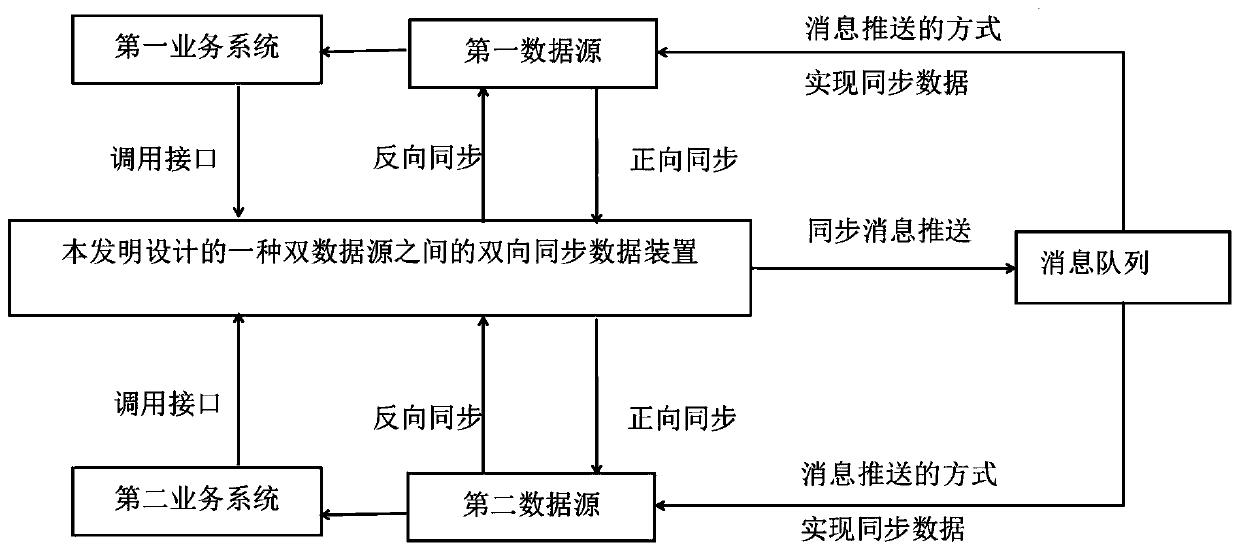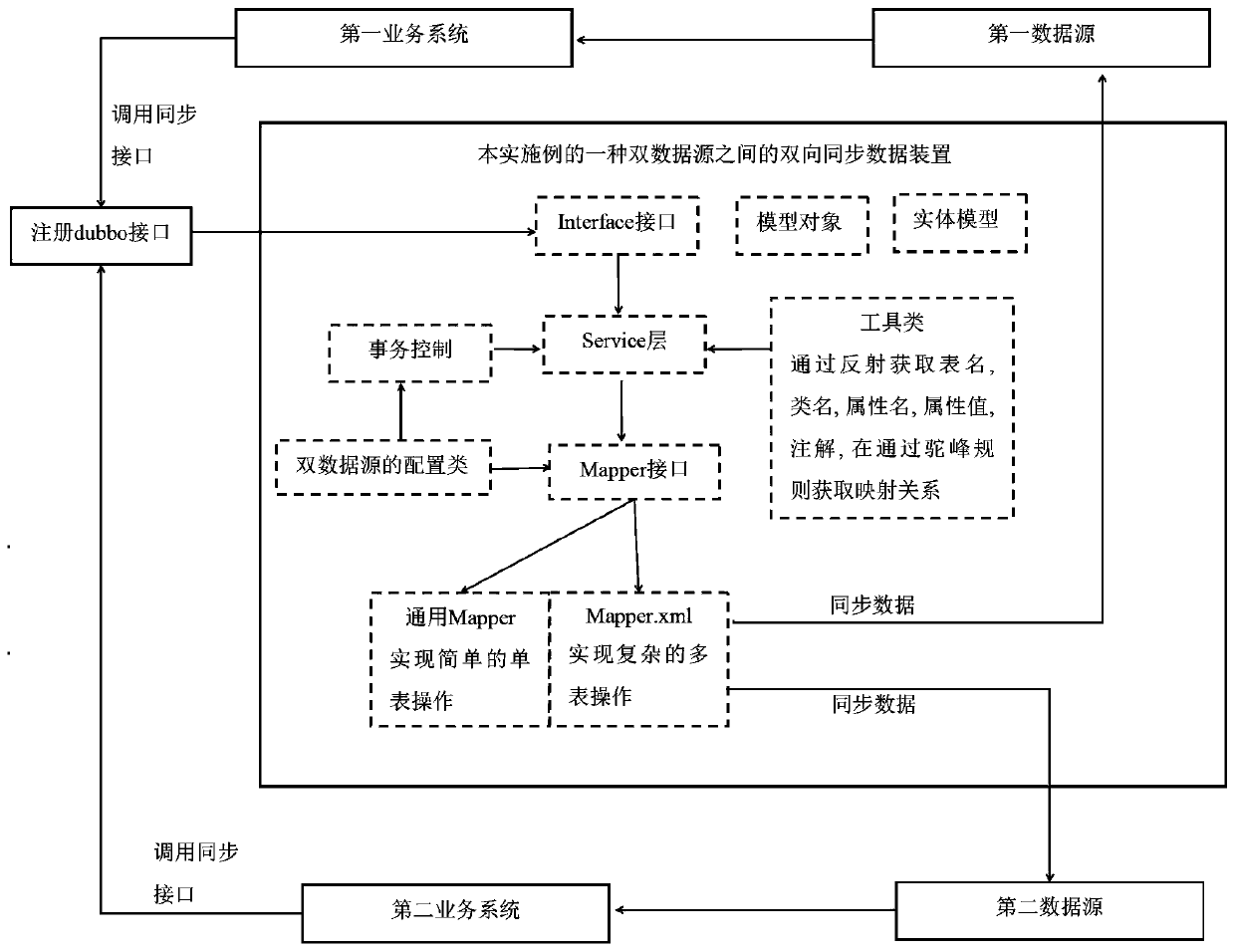Bidirectional synchronous data system between double data sources
A data system, two-way synchronization technology, applied in the computer field, can solve the problem that a single data source cannot meet the demand and so on
- Summary
- Abstract
- Description
- Claims
- Application Information
AI Technical Summary
Problems solved by technology
Method used
Image
Examples
Embodiment 1
[0045] Such as figure 2 As shown, the two-way synchronous data system between the double data sources described in this embodiment includes: the following modules:
[0046] (1) Model object module: including: request parameter model, response parameter model, and constant enumeration model. This module is mainly responsible for: encapsulating request parameters and encapsulating response parameters. In order to facilitate the standardization of requests and responses when providing service interfaces externally.
[0047] (2) Entity model module: Entity models are divided into two categories: one is a plurality of entity models corresponding to the table structure of the first data source, and the function is to make each table of the first data source have in the device of the present invention Corresponding entity class. The second is multiple entity models corresponding to the table structure of the second data source. The function is to make each table of the second data s...
Embodiment 2
[0064] Such as image 3 As shown, this embodiment designs a two-way synchronous data system between two data sources, based on the SpringBoot framework and Mybatis technology, and also based on the Rabbit message queue technology. The device includes the following modules:
[0065] (1) Model object module: including: request parameter model, response parameter model, and constant enumeration model. This module is mainly responsible for: encapsulating request parameters and encapsulating response parameters. In order to facilitate the standardization of requests and responses when providing service interfaces externally.
[0066] (2) Entity model module: Entity models are divided into two categories: one is a plurality of entity models corresponding to the table structure of the first data source, and the function is to make each table of the first data source have in the device of the present invention Corresponding entity class. The second is multiple entity models correspond...
PUM
 Login to View More
Login to View More Abstract
Description
Claims
Application Information
 Login to View More
Login to View More - R&D Engineer
- R&D Manager
- IP Professional
- Industry Leading Data Capabilities
- Powerful AI technology
- Patent DNA Extraction
Browse by: Latest US Patents, China's latest patents, Technical Efficacy Thesaurus, Application Domain, Technology Topic, Popular Technical Reports.
© 2024 PatSnap. All rights reserved.Legal|Privacy policy|Modern Slavery Act Transparency Statement|Sitemap|About US| Contact US: help@patsnap.com










